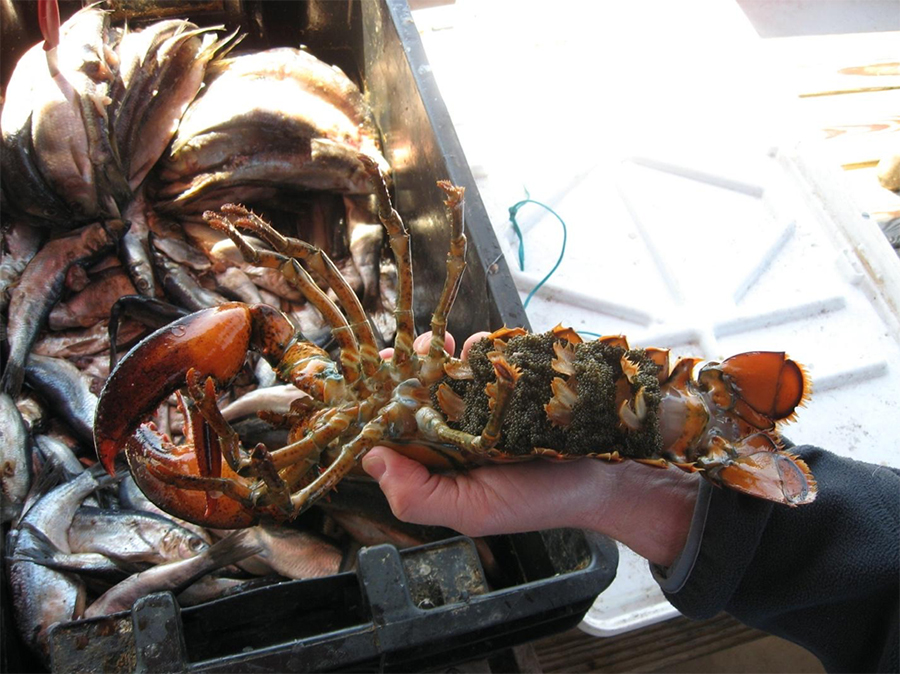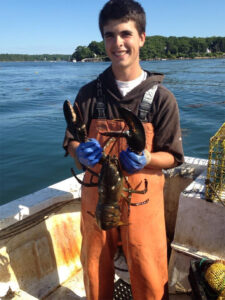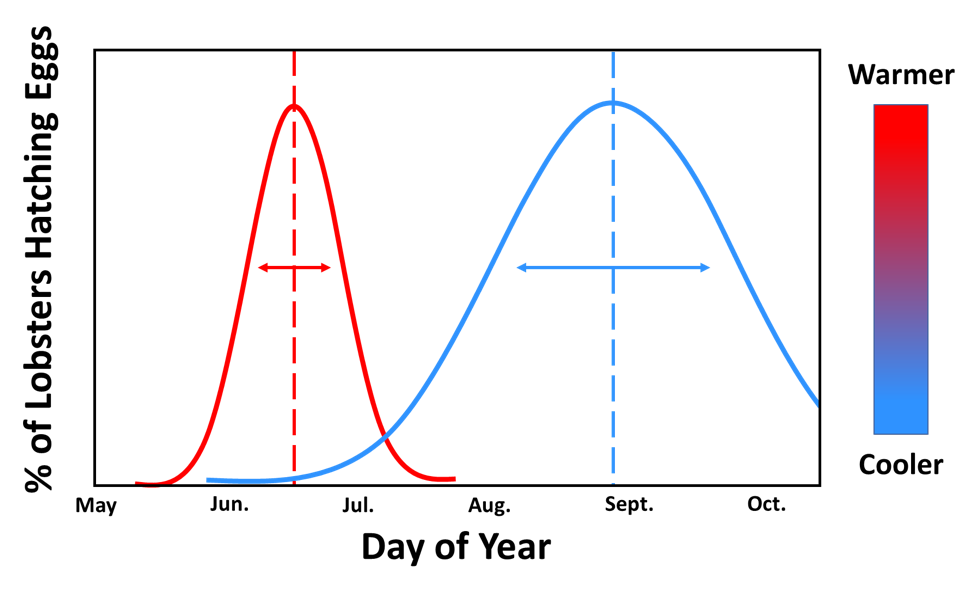
Where do lobsters come from, where do they go, and what happens when there’s a change in the status quo?

Author: Andrew Goode, a graduate student at the University of Maine, working in Dr. Damian Brady’s lab on a research project funded through the National Sea Grant American Lobster Initiative
Environmental change can affect an organism from the moment it’s born to the moment it dies. These effects can be complex and can manifest differently over the life of the animal. For American lobster (Homarus americanus), the animal I study, some of the most profound influences of environmental change occur during the larval stage when lobsters are more susceptible to environmental conditions. Female lobsters can carry thousands of BB-sized eggs under their tails, and when they hatch, the larvae are swept away by ocean currents. Because of this, the behavior of the egg-bearing female and the environment she inhabits influences the conditions to which the larvae are exposed.
Several studies have started to investigate how ocean currents transport lobster larvae along the coastal New England shelf. Scientists have used temperature, ocean currents, and larval behavior (among other things) to create what we call larval lobster transport models. But, so far, those models haven’t included ocean change and its effects on adult lobster behavior. For example, adult lobsters are gradually shifting their populations farther from shore, and more northward as ocean temperatures in the Gulf of Maine rise. This means the female lobsters are exposing their eggs, and eventually their larvae, to different conditions. We also know that as waters warm, egg-bearing lobsters hatch their eggs earlier in the year and over a shorter time frame. These changes, as a result of a changing ocean, will likely have dramatic impacts to larval lobster distribution and population connectivity. With an updated model, we can investigate how moving to deeper waters in new locations may affect the abundance and distribution of the larvae after they hatch.

My work on this Sea Grant-funded research project led by Dr. Damian Brady at the University of Maine aims to incorporate more environmental variability in the existing larval lobster transport models to take into account how ocean change and changes in adult lobster behavior impact lobster populations. My research includes the timing of hatching and the location of egg-bearing females. Using ocean temperature and current speed and direction, our model simulates where and how long a larval lobster travels in the water column after it hatches. To incorporate timing of hatching and location of egg-bearing females, we used existing data from state and federal monitoring programs, such as at-sea lobster sampling, ventless lobster trap surveys, and bottom trawl surveys. We’ll use these distributions, combined with a temperature-dependent egg hatch relationship that we discovered, to modify where, when, and how many larval lobsters are released in our particle tracking model. By identifying how these changes have impacted larval lobster, we hope to be able to better predict the fate of lobster as the ocean continues to change.
With the Sea Grant funding, we have assembled a team whose expertise covers decades of lobster biology and ocean physics to answer these complex questions. Working with this team has offered unparalleled support for my research and the advancement of knowledge about lobster and organism responses to ocean change.
Photographs were taken prior to the coronavirus pandemic. The University of Maine and University of Maine at Machias follow federal and state Centers for Disease Control and Prevention health and safety guidance, which includes social distancing and use of face coverings for the start of the 2020–21 academic year.
